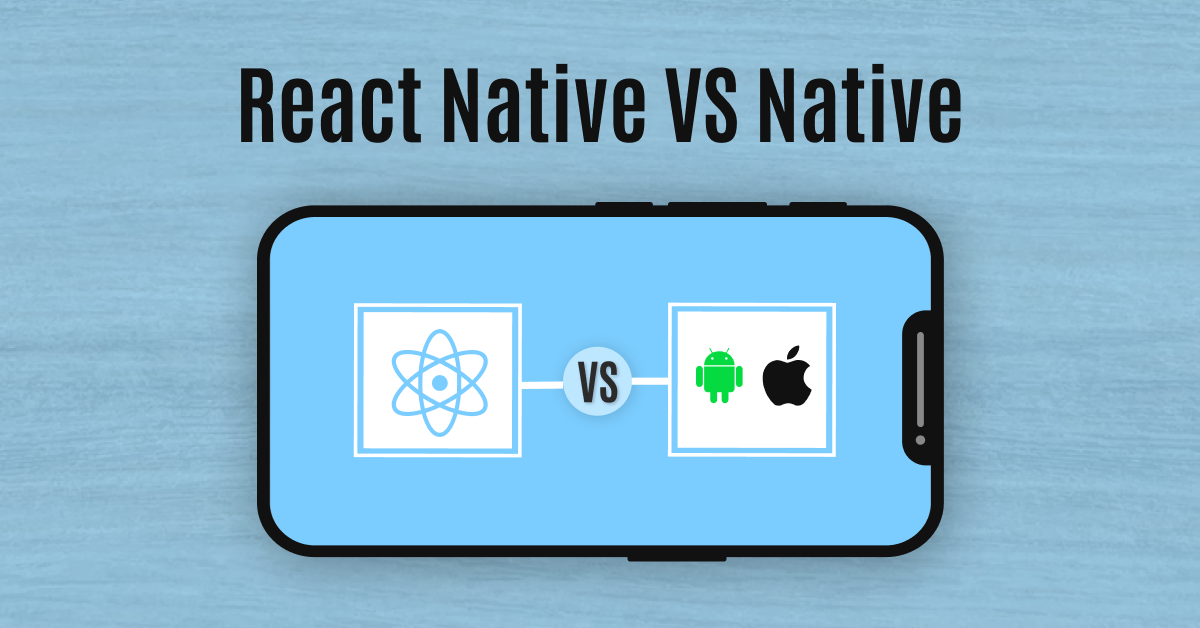React Native vs Native Apps: Which is Best for Your Business in 2025?
 Madhu
MadhuTable of contents
Choosing the right mobile app development approach is critical for businesses aiming to succeed in 2025. With the rise of feature-rich apps, businesses often face a dilemma: React Native or Native App Development? This blog explores both options, providing a detailed comparison to help you make an informed decision.
What is a Native Application?
A Native Application is developed specifically for a single platform—either iOS or Android—using platform-specific programming languages like Swift for iOS and Kotlin or Java for Android. These apps are installed directly on devices and leverage the full range of platform-specific features, offering superior performance and user experience.
Key Features of Native Applications:
Platform-Specific Development: Built using tools and languages tailored to iOS (Xcode, Swift) or Android (Android Studio, Kotlin).
Unmatched Performance: Direct access to hardware and system resources ensures high speed and responsiveness.
Enhanced User Experience: Native apps follow platform-specific design guidelines, delivering seamless UI/UX.
Access to Advanced Features: Full access to device APIs such as GPS, camera, and sensors.
Native apps are ideal for businesses prioritizing performance, security, and complex functionalities. However, they require separate development teams for iOS and Android, increasing the overall mobile app development cost.
What is a React Native Application?
React Native, developed by Facebook, is a cross-platform framework that allows developers to create apps for both iOS and Android using a single codebase written in JavaScript. It bridges the gap between platforms by rendering components natively.
Key Features of React Native Applications:
Cross-Platform Compatibility: A single codebase works on both iOS and Android platforms.
Cost Efficiency: Reduces development time and costs by up to 30%-35%.
Hot Reloading: Developers can see real-time changes without restarting the app.
Community Support: Backed by a large developer community that offers extensive resources.
React Native is perfect for startups or businesses with tight budgets looking to enter the market quickly. However, it may not match the performance of native apps in resource-intensive scenarios.
React Native vs Native Apps: Head-to-Head Comparison
To decide whether to choose React Native or native app development, let’s compare them across key factors:
| Criteria | Native Apps | React Native Apps |
| Development Time | Requires separate teams for iOS and Android; longer time-to-market | Single codebase reduces development time significantly |
| Mobile App Development Cost | Higher due to platform-specific teams | Lower due to shared codebase |
| Performance | Superior performance with direct hardware access | Slightly slower due to JavaScript bridge |
| UI/UX Experience | Platform-specific design ensures exceptional UI/UX | Good but may lack the polish of native UI |
| Scalability | Highly scalable with advanced features | Scalable but limited by third-party libraries |
| Access to Device Features | Full access to all device APIs | Limited access; relies on native modules |
| Maintenance | Requires separate updates for each platform | Easier maintenance with shared codebase |
When Should You Choose Native App Development?
An iOS app development company, an Android app development company, or even an enterprise focusing on high-performance apps should consider native development in scenarios like:
Apps requiring advanced hardware integration (e.g., AR/VR).
Businesses prioritizing superior UI/UX.
Applications demanding high security and performance.
When Should You Choose React Native?
For businesses looking for cost-effective solutions, an AI app development company or any other firm might choose React Native in cases like:
Startups with limited budgets aiming for quick market entry.
Apps targeting both platforms simultaneously.
Projects with less emphasis on heavy computations or complex animations.
Mobile App Development Cost Considerations
The cost of mobile application development varies based on several factors:
Native Apps: Costs are higher due to separate teams for iOS and Android. Expect expenses ranging from $50,000 to $300,000 depending on complexity.
React Native Apps: Shared codebase reduces costs significantly, ranging from $30,000 to $150,000.
Collaborating with a reliable mobile application development company ensures transparent pricing and quality outcomes.
Conclusion
The choice between React Native and Native Apps depends on your business goals, budget, and app requirements. For high-performance apps with complex features, native development is the way forward. On the other hand, React Native offers cost-effective cross-platform solutions ideal for startups or businesses targeting quick deployment.
Partnering with an experienced team—be it an iOS app development company or a mobile application development company—can help you navigate this decision effectively.
Which approach aligns better with your business needs in 2025? Let us know in the comments below!
Subscribe to my newsletter
Read articles from Madhu directly inside your inbox. Subscribe to the newsletter, and don't miss out.
Written by

Madhu
Madhu
Hyena Information Technologies, founded in 1999, specializes in software development and consulting, focusing on mobile applications, AI, and IoT solutions for diverse clients.

